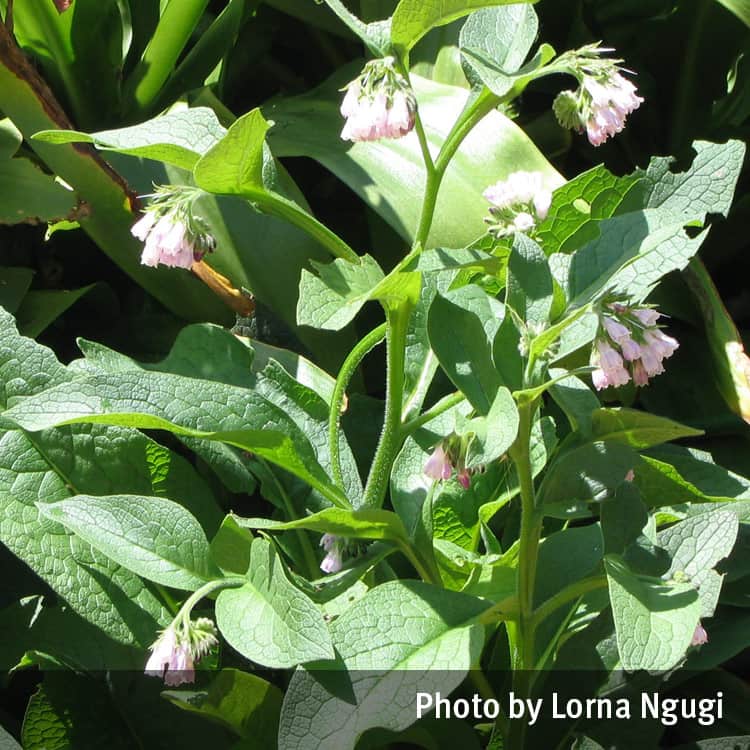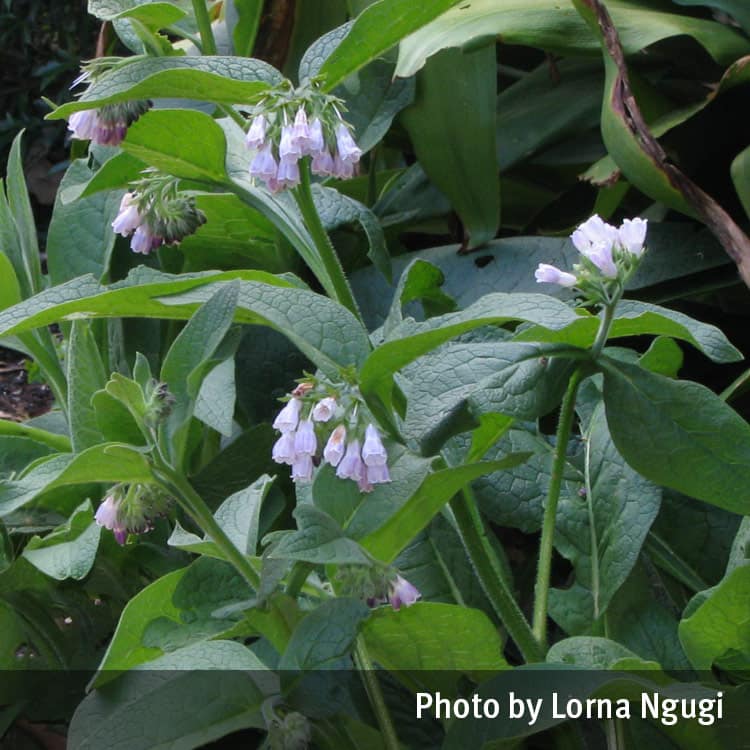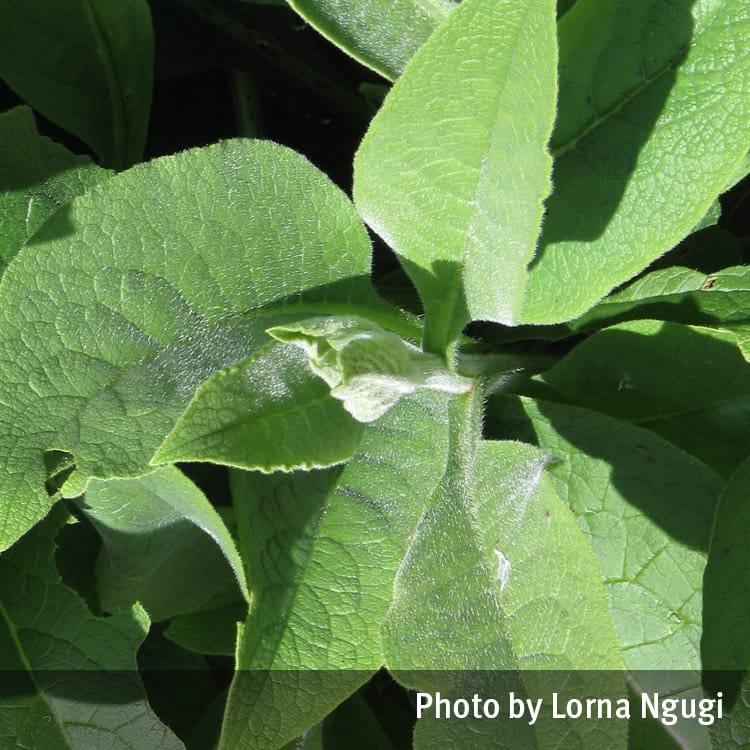Warning
Seek medical attention if ingested.
Description
A coarse, vigorous, clumping, tuberous perennial herb covered with stiff hairs growing to 90cm tall and up to 50cm wide. Cultivated for culinary or medicinal use.
Flowers are mauve, purple or creamy yellow, bell-shaped and in clusters along one side of the flower stem, often drooping downwards.
Leaves are covered with stiff hairs, oval to lance-shaped, arising from a basal rosette, decreasing in size towards the top of the plant; larger leaves to 25cm long. The leaf base is tapered into the stem giving a winged appearance.
Toxicity
Symptoms
All parts of the plant are poisonous. Ingestion may cause delayed liver damage. Repeat exposure may lead to liver failure. Death has been reported. The stiff hairs on the leaves and stems can cause skin irritation.
Images



Details
Common name: Comfrey
Botanical name: Symphytum officinale
Family: Boraginaceae
General description: A coarse, vigorous, clumping, tuberous perennial herb covered with stiff hairs growing to 90cm tall and up to 50cm wide. Cultivated for culinary or medicinal use.
Flowers: Flowers are mauve, purple or creamy yellow, bell-shaped and in clusters along one side of the flower stem, often drooping downwards.
Leaves: Leaves are covered with stiff hairs, oval to lance-shaped, arising from a basal rosette, decreasing in size towards the top of the plant; larger leaves to 25cm long. The leaf base is tapered into the stem giving a winged appearance.
Fruit/Berries: The fruit is a shiny, smooth black nut to 6mm.